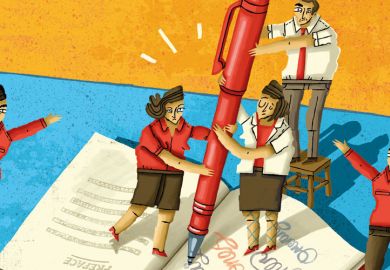First authors should be held accountable for scientific misconduct in their papers unless it can be proven that they were not responsible, academics have argued.
Guidelines produced by scholarly societies typically suggest that authors should be directly accountable only for the work they contribute to articles, or that all contributors should be held equally culpable.
However, some major players in scientific publishing, including the American Psychological Association and the BMJ, have adopted a guarantor model. Katrin Hussinger, professor of strategy and organisation at the University of Luxembourg, and Maikel Pellens, visiting professor in entrepreneurship at Ghent University, argued that this should be adopted more widely after conducting a study that found that first authors were much more likely to be behind research malpractice.
Analysing the results of 80 misconduct investigations conducted by the US Office of Research Integrity between 1993 and 2014, covering 184 publications, first authors were 38 per cent more likely to be responsible for wrongdoing than authors listed in the middle of the byline. In biomedicine, first authors typically came up with the original idea for the study and did most of the experimental work. Corresponding authors were 14 per cent more likely to be to blame, according to a paper published in Plos One this month.
Last authors – typically the most senior member of the team, with a general oversight role – were slightly more likely to be at fault, while middle authors – also known as contributing authors – were significantly under-represented among the wrongdoers.
Professor Hussinger told Times Higher Education that there should be a “guarantor-type model that holds principal authors ex ante accountable for misconduct, given that they have the best knowledge of the essence of the project and the highest incentives to commit or to prevent misconduct”.
Such a model would “still capture the responsible author in the majority of cases” while “avoiding a large part of the social cost of stigmatisation” by not involving “probably innocent” co-authors, Professor Hussinger said.
“In effect, it focuses ex ante accountability on those authors who are most likely to actually commit misconduct,” said Professor Hussinger.
She added: “If evidence surfaces that another author is responsible for misconduct, that author should of course be held accountable.”
POSTSCRIPT:
Print headline: First authors should be ‘first in line for blame’
Register to continue
Why register?
- Registration is free and only takes a moment
- Once registered, you can read 3 articles a month
- Sign up for our newsletter
Subscribe
Or subscribe for unlimited access to:
- Unlimited access to news, views, insights & reviews
- Digital editions
- Digital access to THE’s university and college rankings analysis
Already registered or a current subscriber?








